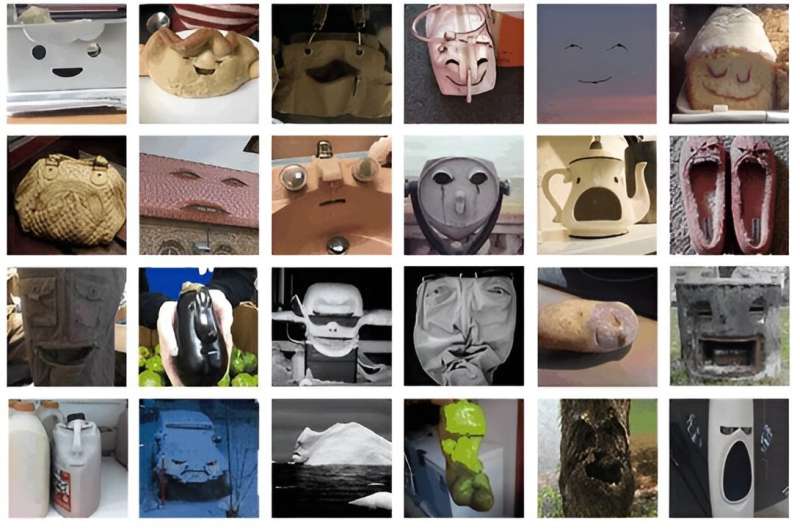This article has been reviewed according to Science X's editorial process and policies. Editors have highlighted the following attributes while ensuring the content's credibility:
fact-checked
peer-reviewed publication
trusted source
proofread
Happy women and angry men: Who are you more likely to see in strange objects?

Seeing faces in inanimate objects is a common occurrence but research from QUT has found our brains assign them the same biases as we would human faces.
Known as "face pareidolia," the phenomenon describes the illusion in which people see faces in otherwise trivial things—like the man in the moon, Jesus on a piece of toast, or an image of the Virgin Mary on a decade-old grilled cheese sandwich that fetched US$28,000 at auction.
Lead researcher Professor Ottmar Lipp, of the QUT School of Psychology and Counselling, said the human brain is primed to detect faces. He said, "They provide a wealth of information about the people we interact with and, as social beings, it is important for us to recognize this information and to adjust our behavior.
"Responding to these cues—about a person's age, sex and ethnicity but also how they are feeling at the moment via their facial expressions—in an appropriate manner can enhance the likelihood that we maximize positive outcomes and minimize danger."
One such instance in which our minds take shortcuts to help us understand the world is the happy face advantage.
"This refers to the observation that we are faster and more accurate to recognize happiness than negative emotions such as anger or sadness," Professor Lipp said.
"However, this recognition advantage is modulated by other information that we have about a person—what is available by looking at them or what we have learned about them.
"The happy face advantage is bigger for female faces than for male faces, bigger for young faces than for old faces, bigger for ingroup faces than outgroup faces (however the group is defined), and bigger for people we find attractive or believe to be nice people."
The research, published in the journal Emotion, tested whether this happy face advantage was unique to human faces or would show up with examples of face pareidolia.
Almost 100 participants were shown numerous examples of face pareidolia and the speed and accuracy with which the expressions were perceived as happy or angry were measured.
"We found a robust happy face advantage for illusory faces that were rated as more feminine in appearance," Professor Lipp said.
"But we also found a robust angry face advantage for illusory faces that were rated as more masculine in appearance. There are a number of explanations for this bias that have been offered but the one with the widest reach is that we see happiness faster on faces we evaluate as relatively more positive.
"Female faces are by and large evaluated as more positive than male faces, so we see happiness faster on female faces when presented among male faces. We see happiness faster than anger on male faces if we present them alone without female faces or among faces that are relatively more negative like outgroup faces."
Taken together, Professor Lipp said these findings suggest that illusory faces confer the same behavioral advantages as human faces.
"We are very primed to see faces. Anything that resembles a face will trigger the same socio-cognitive processing mechanisms as real faces—even a burnt piece of toast," he said.
"This knowledge may help us to reduce biases and facilitate positive, productive interactions."
More information: Ottmar V. Lipp et al, The face pareidolia illusion drives a happy face advantage that is dependent on perceived gender., Emotion (2024). DOI: 10.1037/emo0001346


















